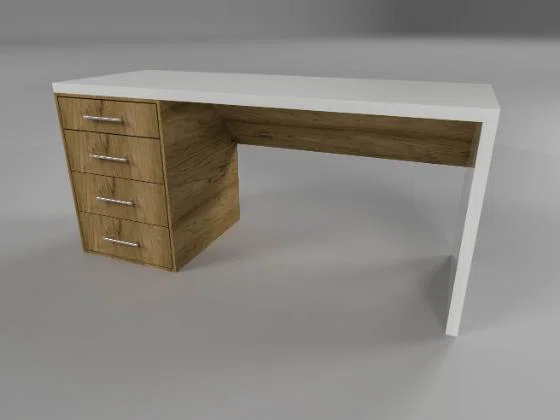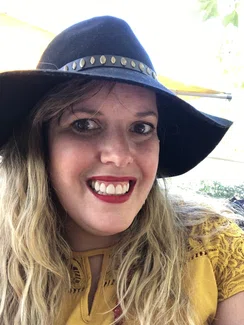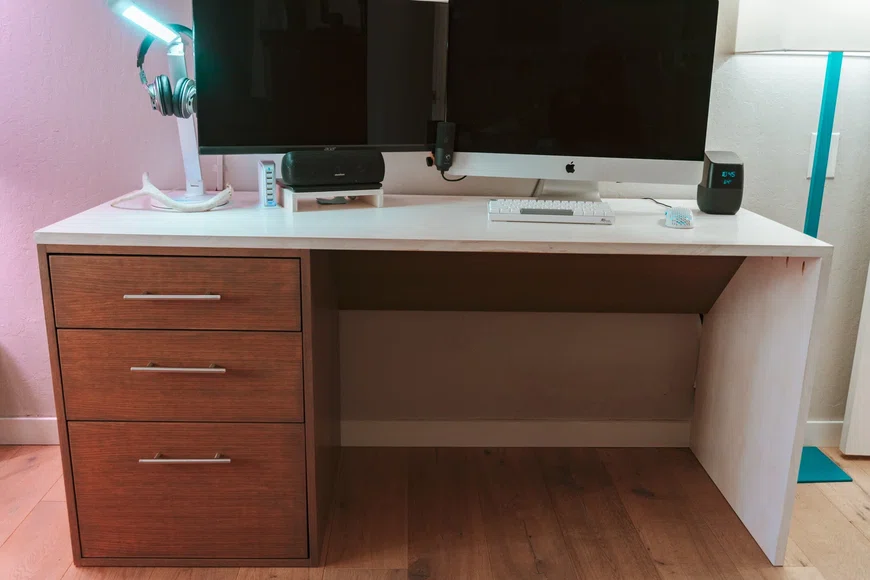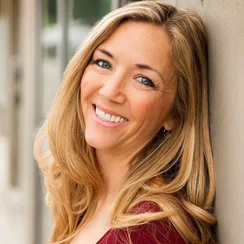





3-D Design
Andrew Galbraith
Northgate High School|Walnut Creek, California

Untitled|30 x 64 x 24 in
Idea(s): Create a simple desk with built in cable management. Designed for low cost, quality.
Material(s): 3d designed and rendered in Fusion 360 built from birch and oak plywood, handles, misc. hardware.
Process(es): designed in cad, cut and assembled pieces, stained, coated, added drawers on slides.
Curatorial Note: eco materials used to create desks.


“Throughout the year, I transitioned through using collected eco materials, imitating natural formation, miniaturizing landscape, and designing for natural efficiency. My focus evolved halfway through, I setted on the inquiry question of “how can natural forms be incorporated into design?”

Student statement
Student
statement
Based on "What ways did you practice, experiment, and revise when developing your portfolio?"
I've always been interested in the contrast between nature and man-made. I grew up outside, to a father who is an architect. Jumping from camping in the woods to watching him design modern buildings in big cities is a stark contrast. The juxtaposition between the things man creates and the material it is created from, placed within, and lives upon is one to be contemplated. I tried to understand this harmony, be it by finding nature's hard edges or the softness of man's creation. Throughout the year in AP 3-D Art, my mediums and expression changed wildly while my central focus stayed the same. I used materials raw, refined, and manufactured in techniques both tested and untested. I recreated organic forms from manufactured material and geometrical faces from organic material. With every new angle came revelation and understanding, furthering my journey to comprehending this balance. My pieces were far from perfect, and I occasionally found myself stuck on an idea doomed to fail. But with time, patience, and ideation, projects came together.
My advice to anyone out there, AP art students or not, is to just keep ideating. Keep ideas cycling through your head, open yourself to new viewpoints, and try those ideas. This applies to art, design, and beyond.

Andrew Galbraith

Teacher Statement
Teacher Statement
Carolyn Moore
The AP Art and Design course supports inquiry-based personalized learning in the sustained investigation portfolio component. What strategies helped you guide students through Inquiry?
We start the year by exploring the inquiry-based process with mind-maps and artist research. During critique, we often go back to the question and why are you creating the work.
How did you scaffold writing into the artmaking and thinking processes?
We turn in writing with every assignment, and as the mentor, I guide the students to process what they are interested in making and why. Pushing writing from the start makes the ideas more clear.

How did you support skill development AND inquiry in the AP Art and Design curriculum?
This is a bit harder in the case of Andrew. I have built some furniture, but I am no expert. So we look for resources that can help. We look for mentors in the community, and I push practice.
How did you structure practice, experimentation, and revision into your AP Art and Design
Curriculum?
My classroom is a playground of maker's stuff. I encourage the students to explore, go outside the comfort of the familiar, and play with other materials that work with the question. Critique is our home base for group dynamics and mutual encouragement. In critique, we push each other to revise the work or the investigation question. We start each critique with TAG (Tell something you like, Ask a question, & Give a suggestion) from one student then we open to all groups. Finally, we go around and give ideas to end the critique. Ideas tend to be fresh viewpoints the students have seen that relate to the work or something as simple as I saw this TikTok it reminded me of your project.
What formative and summative assessments helped guide your students through your AP Art
and Design curriculum?
Have them turn in a Si piece on a google slideshow with writing every few weeks and grade all assignments on the SI rubric. Grading on the rubric is tough initially, but I let them re-submit for a better score. We have a AP gallery show at the end of school, so we also are pushing toward that space.
What kind of creative programming (i.e., exhibit spaces, mentoring programs, curricular
supports) have you implemented to support AP Art and Design students?
We have an AP art show at the end of the year where each student has to fill up a wall. We try to bring in as many outside speakers as possible to show them career paths and work practices. Andrew was part of my Photograph class during online covid. He really benefited and found my program through the Hybrid model we started last spring. The students who wanted to return to school came for enrichment for two hours, two days a week. This is when Andrew learned to play and create in my classroom. When I saw he wanted to build, I encouraged him to take AP.
What did you learn from working with this student?
Working with Andrew was a delight because if he was stuck, he knew to look for the answers by trial and error, never giving up. He is quick to pick up the software and has an eye for clean design and an appreciation for the nature surrounding us.
Is there anything your school principal does to support your art students or art program?
My principal is very supportive of our program. She makes sure always to recognize the artist as well as even comes for a critique or two. She also set up the Hybrid enrichment program, which meant the world to some of my struggling artists.
What is your advice to other AP Art and Design teachers?
One-on-one is needed a lot in the beginning but creates group support in your class. I encourage my students to rely on each other and usually get them on a group text from the beginning. Also, respond to the work later in a quiet space. I use an app to record a critique on Google classroom (slides). Spoken critique can be a little more gentle than a written comment. When grading the rubric, I remind them this is about growth and keeping them on task. I also will go back and change grades if they refine the work or writing. Finally, be there for them. Have an open and supportive space. The portfolio is tough but every student leaves with a growth mindset from my class.

Principal Statement
Principal Statement
Kelly Cooper
At Northgate High School, we have a robust digital, 2-D, and 3-D art program, with teachers dedicated to assuring our students are receiving training on industry-standard platforms, preparing them for potential careers should they wish to pursue them. As professional artists, they can connect students with industry partners and internships, as well as a variety of modes and mediums to gain experience and spark inspiration.

I took over as principal during our year of distance learning, and due to the pandemic, students access to these mediums were very limited. Art was set to suffer, but for the creativity and dogged determination of Ms Moore and our art department. In March of 2021, we were able to bring students back in for a two hour block, and Ms Moore offered an art block that Andrew participated in. It was during this time that he became interested in combining his nature photography work with 3D design, and his interest in 3D grew during this time.
I am so proud of Andrew and his work, and of Ms Moore for her creative solutions and consistent advocacy for students.
Andrew Galbraith








